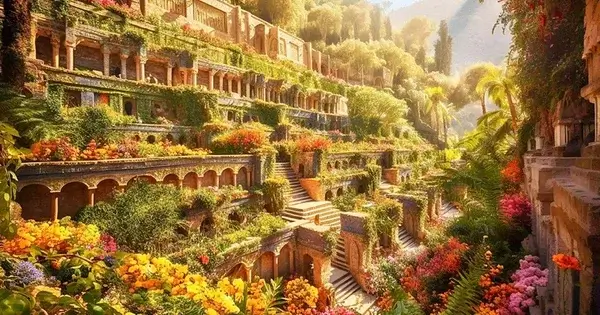
Gardens of Babylon
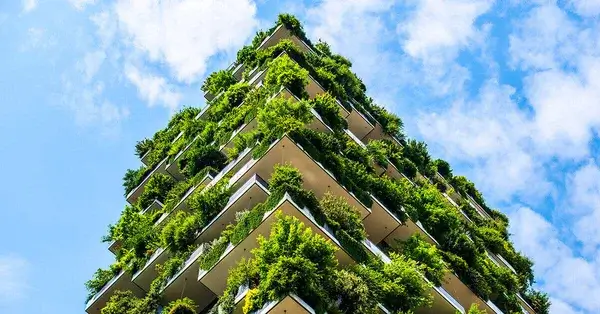
Modern Day Vertical Garden Architecture
Imagine a vertical garden, just as the name suggests, bursting with an array of plants that climb skyward, often adorning a wall or some other sturdy support structure. While instances of these verdant marvels can be found in the natural world and in ancient civilizations, none have quite matched the legendary status of the Hanging Gardens of Babylon, a true wonder of ancient architectural history.
Fast forward to the present day, and vertical gardens have taken on a thrilling variety of forms and designs. They span from the simplicity of exclusive planting pockets or pots to the intricacy of purpose-built, cutting-edge planting systems. What’s more, these botanical wonders can flourish both inside and outside, adding a touch of nature’s grandeur to any setting.
The Rise of Green Architecture
As urban areas grow denser and available land dwindles, cities worldwide are embracing the phenomenon of verticalization. Just like the vertical ascent of buildings, which often sparks debates among architects and urban planners, numerous initiatives are exploring the vertical dimension as a means to incorporate greenery into urban spaces. These initiatives include vertical gardens, farms, and forests, rooftop vegetable gardens, and elevated structures designed for urban agriculture. Each of these vertical cultivation methods comes with its distinct features and effects on the city and its residents, adding a refreshing touch of green to the urban landscape.
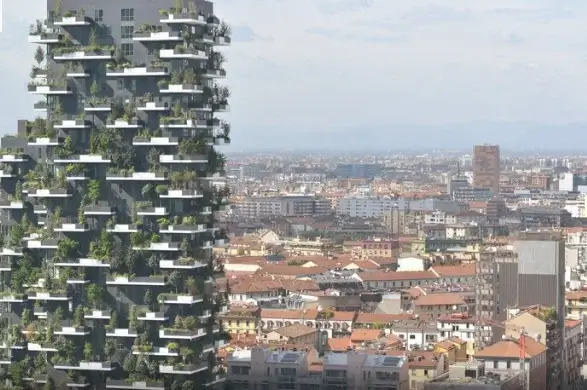
In densely populated cities like Tokyo and New York, there’s a growing trend of using vertical farms and green roofs to make the most of unused spaces for food production, contributing to food security. In New York, more than 36 tons of organic vegetables are cultivated on building rooftops each year. This not only yields food but also serves as a protective barrier, preventing many pollutants from reaching the city’s rivers. Meanwhile, in Tokyo, the Sorado Farm project has established open-to-the-public orchards on the roofs of train stations, and an office building has transformed its exterior into a vertical farm.
These projects showcase innovative ways to grow different plants, whether for people to eat or for other purposes, without using traditional ground-based methods. Vertical gardens come in various designs depending on the building, types of plants, and location, but they all aim to make the most of available green spaces without taking up much horizontal room. This means that the well-known benefits of having plants in cities can be enhanced through vertical gardening.
Benefits
Going Vertical helps tackle various urban challenges, like cooling down hot areas, increasing the variety of species, ensuring there’s enough food, cleaning the air, and reducing CO2 emissions, among other positive effects.
Cities, which produce 75% of the world’s carbon emissions, must play a key role in reducing environmental harm. Many architects and city planners are using vertical construction to create more urban green areas, which make cities better for their residents. This approach is especially helpful in crowded cities with limited space.
Vertical gardening is a great way to add greenery and grow plants in cities, but it doesn’t replace the benefits of traditional ground-level green spaces.
Air Quality
In cities, we spend around 90% of our lives indoors, doing everything from learning and working to socializing and sleeping. Unfortunately, indoor spaces often come with air conditioning and harmful toxins like formaldehyde, VOCs, trichloroethylene, carbon monoxide, benzene, toluene, and xylene, which can seriously affect our health.
Vertical gardens, on the other hand, are eco-friendly heroes that reduce a building’s carbon footprint by effectively purifying indoor air. Recent NASA research revealed:
- Plant leaves and root micro-organisms can cleanse the air inside buildings.
- Some tropical plant species are more efficient at this purification than others.
- Moreover, these plants release more oxygen, helping people stay awake and alert while enhancing the indoor environment.
Biophilia
Biophilia is our innate love for life and the living world, reflecting our natural urge to connect with nature and other life forms. Vertical gardens, as a prime example, seamlessly integrate nature’s elements, materials, and shapes into architectural wonders. These green installations, often a diverse mix of plants, have been scientifically proven to deliver tangible benefits. They reduce stress, boost cognitive function and creativity, elevate happiness and well-being, and even enhance the body’s ability to heal quickly.
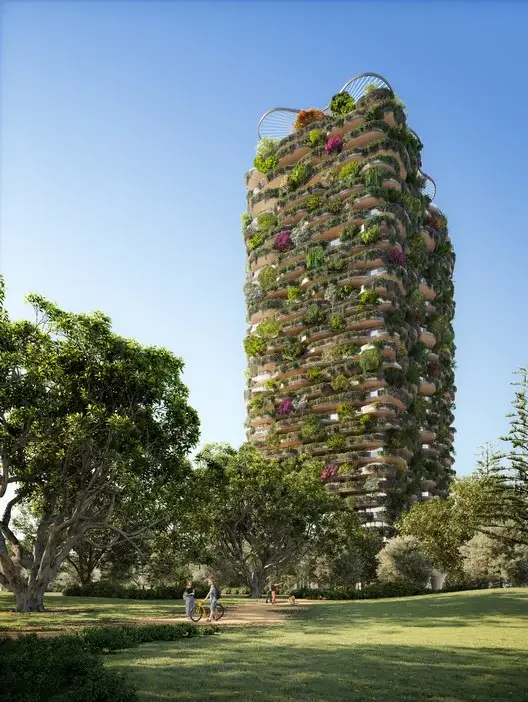
Koichi Takada, South Brisbane
Thermal Benefits
External Walls
Urban Heat Islands (UHI) are like urban hotspots, where cities transform the landscape and crank up the heat, creating temperatures significantly hotter than their rural neighbors. This sizzling effect is amped up by bustling human activity, the hustle and bustle of vehicles, buses, and trains, and the way buildings and surfaces soak up the sun’s energy, only to radiate it back out. But here’s the exciting part: external vertical gardens act like nature’s heroes, fighting the UHI issue effectively. They reduce heat absorbed by buildings and lower temperatures, reducing the need for energy-hungry air conditioning. It’s a powerful move for sustainability in our cities, giving urban life an eco-friendly twist!
Internal Walls
Indoor vertical gardens, brimming with a vibrant tapestry of green, become enchanting champions for our environment. They work their magic by first cooling the air, turning stifling indoor spaces into refreshing sanctuaries. Then, they wield their power to balance humidity, creating a perfect oasis of comfort. And if that wasn’t enough, they sway in the breeze, boosting airflow and turning stagnant spaces into vibrant, refreshing areas. These gardens are like a breath of fresh air, breathing life and excitement into our surroundings!

Indoor Vertical Farming
Food Production
In the realm of food production, we’ve come a long way from the traditional trellises and basic supports for plants. Today, it’s all about the exciting world of agribusiness, where the cultivation of leafy greens, herbs, and plant seedlings has taken a leap into the future. Picture this: multi-level growing systems in fully enclosed, climate-controlled environments that function as vertical gardens. They’re like sci-fi farms, but they’re real and rapidly spreading across the globe!
What’s truly thrilling is that these vertical gardens aren’t bound by fertile land or limited by climate conditions. They thrive anywhere, whether it’s under the scorching sun or in the depths of winter, thanks to their controlled settings. Say goodbye to the old farming constraints – here, there are no seasonal limits, no worries about pests or predators, and no unexpected setbacks. The result? Consistently top-notch produce, every time. It’s food production like you’ve never seen before, with quality and reliability at its core!
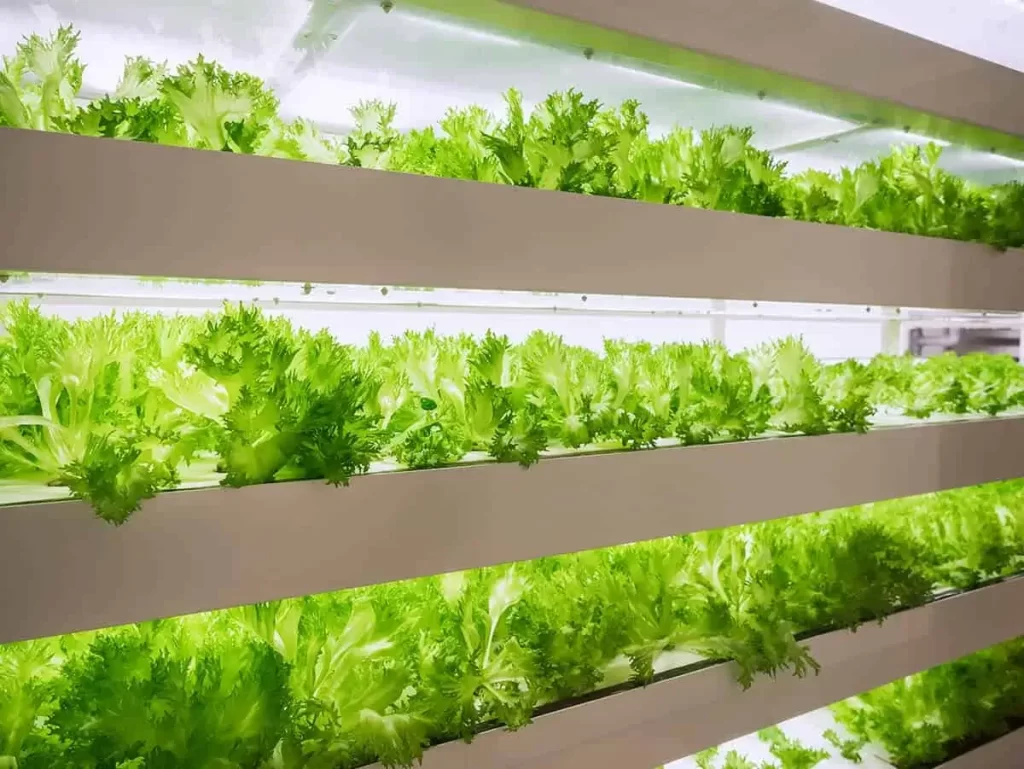
“It is criminal that a person gets to occupy 200 square feet of space to park a car, when you can grow $1400 worth of food in that much space. Who gave it all to the cars? Perhaps we wouldn’t need to think about vertical forests and farms if we properly used the horizontal space on the roofs and in the street.” –Lloyd Alter in Putting Trees on Skyscrapers: An Interview with Lloyd Alter
Indoor Green Walls
Indoor vertical gardens don’t just bring character and beauty to any room; they serve as enchanting backdrops for both workspaces and homes. When crafting these green wonders within buildings, plant selection for indoor resilience is paramount. But here’s the electrifying twist: proper illumination is the secret sauce, harmonizing natural and artificial light to ensure these leafy beauties get the exact lighting they crave, wherever they stand.
And that’s not all! These indoor green walls thirst for more than just a dash of rain. They demand specialized irrigation systems, offering two options:
The Open-Loop System: Imagine a self-sustaining world where water flows in and out, all managed by a control unit.
The Closed-Loop System: It’s like having a personal reservoir that automatically showers your plants. Just remember to top it up before it runs dry!
But wait, there’s more! Picture free-standing structures adorned with vertical gardens on both sides, doubling as room dividers in private or business spaces. And for those tight spaces that crave a touch of green magic, consider green paintings—an artistic twist on green walls that turns plants into captivating design elements. These indoor green marvels are like a symphony of nature and innovation, transforming any space into a vibrant, living masterpiece!
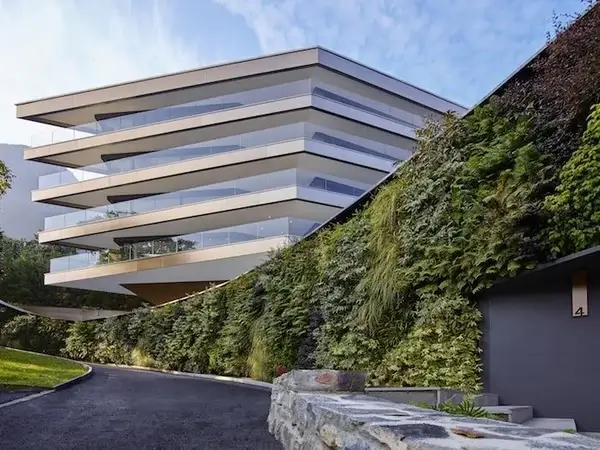
Do Vertical Green Walls Require Much Maintenance?
The maintenance frequency for these unique “Vertical Green Walls” varies depending on the chosen plants and can range from once to four times a year. However, for indoor green walls, maintenance needs to be more frequent.
In the case of indoor installations, especially in private residences, it’s crucial to select plants that don’t grow excessively to prevent them from taking over the space.
What’s truly captivating about the beauty and versatility of these plants is that the technology for vertical growth can be applied virtually anywhere. Whether it’s the grand facades of public buildings or small squares tastefully integrated into a private residence’s wall, the magic and popularity of vertical gardens lie in the ability to have a personal green oasis, regardless of the available space.

Gardens by the Bay, Singapore

Implementing Home Designed Gardens
Indoor gardens offer a range of significant advantages for home living, spanning from enhancing the visual appeal of your space to promoting better well-being and efficiency. Research has demonstrated that indoor plants play a vital role in purifying indoor air by removing harmful Volatile Organic Compounds (VOCs) emitted by adhesives, furnishings, clothing, and solvents, which are known to be detrimental to our health. Additionally, they can enhance one’s perceived ability to concentrate and experience satisfaction, while also measurably boosting productivity.
Moreover, indoor gardens have the potential to reduce energy consumption and associated costs, as they decrease the necessity for constant air circulation. These advantages complement the obvious aesthetic benefits of a thoughtfully designed indoor garden, making it an appealing residential feature on multiple fronts.
How to build your own DIY Vertical Gardens
Around 30 years ago, French landscape architect Patrick Blanc was a pioneer in creating vertical gardens in Paris and other cities worldwide. These gardens use vertical structures to grow a variety of plants on building exteriors. This not only cools the buildings but also brings greenery to new heights in cities.
Blanc’s work was part of a larger movement to understand how nature can benefit cities. It highlighted the importance of green spaces and influenced social, environmental, and urban policies.
Cities like Singapore, London, and São Paulo have embraced this approach to improve urban living.
If this interests you, click here to read the article with steps on how to Grow Your Own DIY Vertical Garden!
To Conclude
Overall, the integration of vertical gardening into architectural design offers a range of significant benefits. It makes cities greener, which cleans the air, cools down the urban environment, and supports diverse plant and animal life. It also helps with growing food in cities, which can increase food security.
This creative approach doesn’t just make better use of space in crowded cities; it also makes cities look more attractive and improves the overall quality of city life. Furthermore, it aligns with global efforts to reduce pollution and protect the environment. All in all, combining vertical gardening and architecture is a promising way to create more sustainable, lively, and resilient urban areas.

About the Author
Mr Stacky is the leader in Tower Garden Systems in Australia, specializing in commercial hydroponic farming, urban farming & residential vertical gardening.
Find out how he can help you achieve your food production goals. Contact Brian
